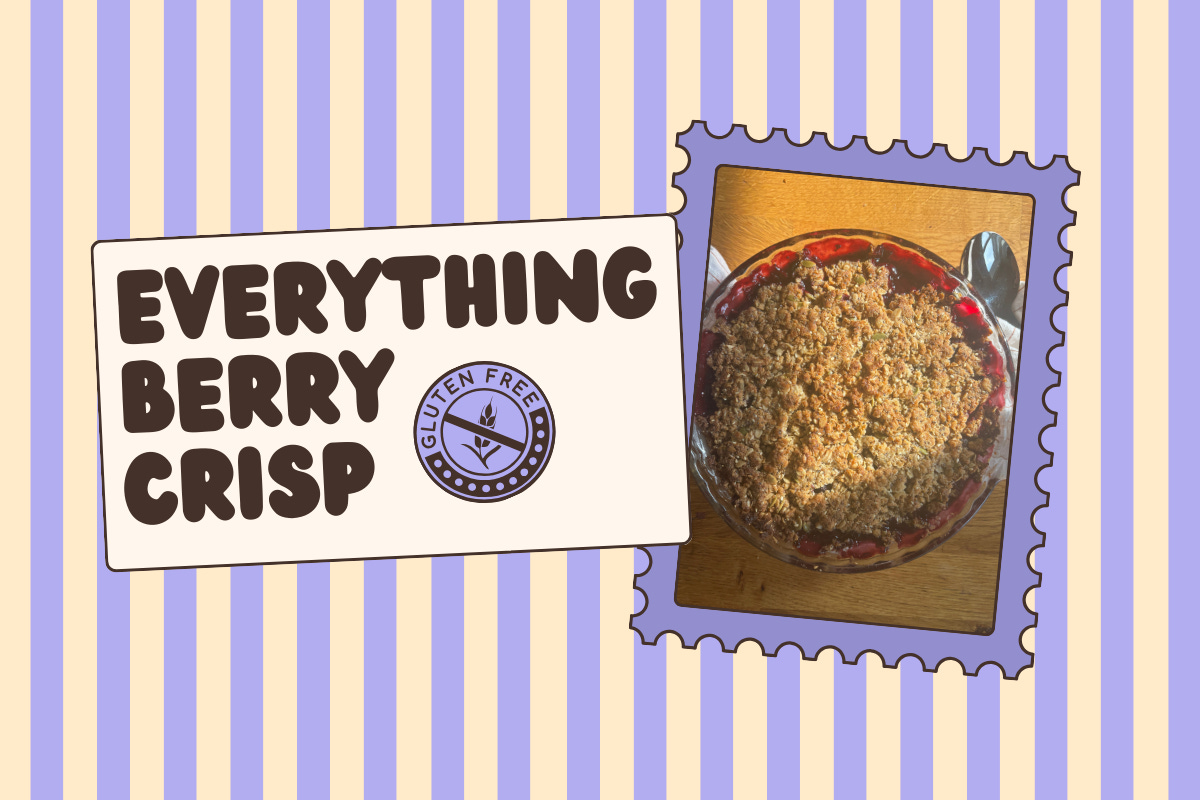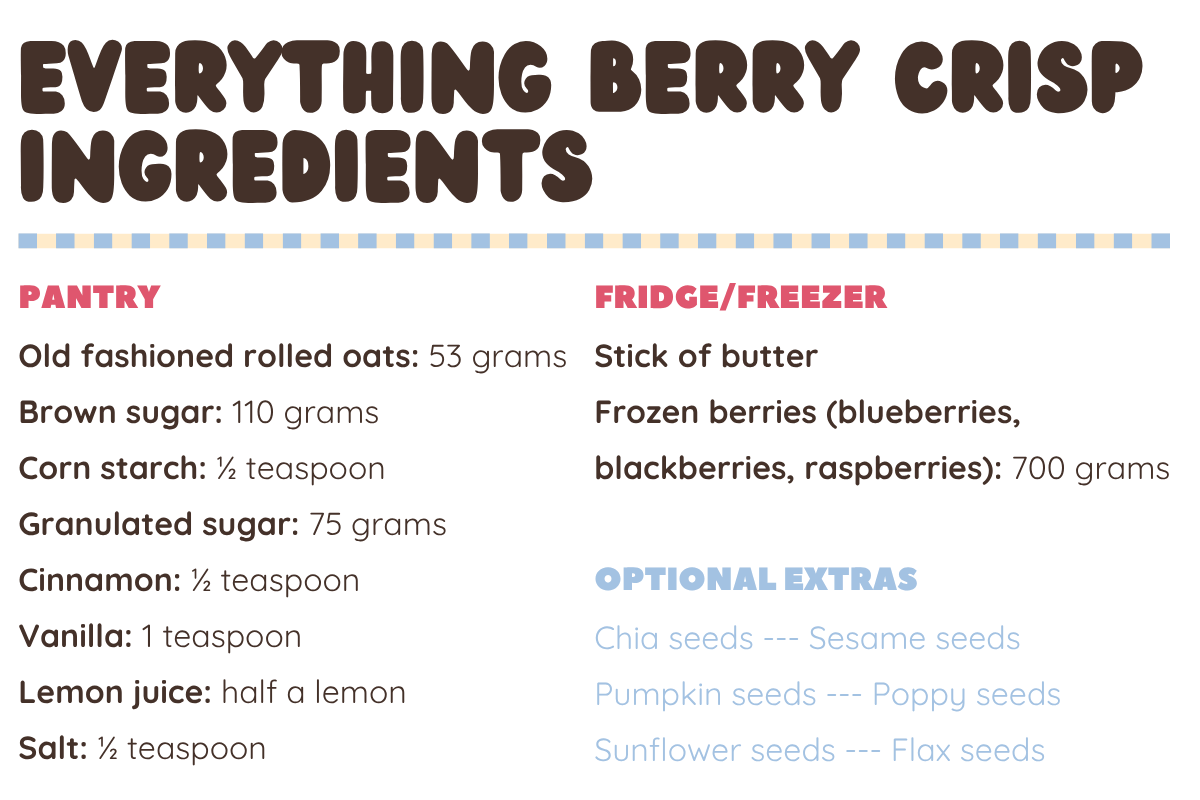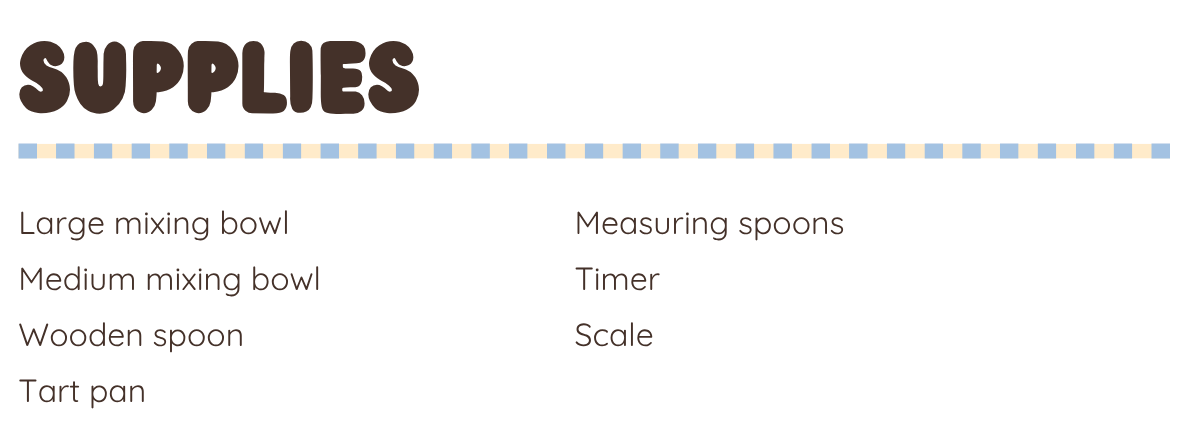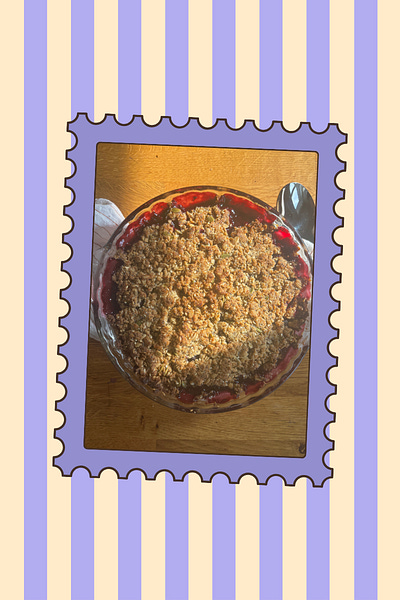Kid Recipe: Everything Berry Crisp
A Bake That Teaches Kids the Joy of Making for Others. And it's gluten free!
This crisp is packed with frozen berries, oats, and a mix of fun add-ins. Inspired by “everything bagel seasoning,” it swaps out garlic and onion for seeds—letting kids choose which ones to include and how much of each. Using frozen berries keeps it affordable and available year-round, and the crumble topping makes it easy for kids to manage almost entirely on their own.
I designed this recipe with the thought that your kids will bake it for others. It’s a large tart, perfect for sharing, and some of the flavors may appeal more to adults than kids. Baking for other people is one of my favorite ways to show love and care. I think about what friends and family enjoy so that each dish might appeal to whomever I’m baking for. The goal is, of course, that they love the baked goods, but I also want it to feel thoughtful and personal—and kids can also learn how good it feels to make something for someone else that is particular to them and their tastes.
Kids will decide which add-ins to include (flax seeds, poppy seeds, etc.) while thinking about who will be eating their crisp. Maybe these aren’t their favorite flavors, but they know someone else will love them. Maybe someone orders poppy seed bagels, for example, or adds flax seeds to their yogurt. Part of the idea is that these seeds will likely be in your house because someone (and probably not your kid) likes them. That’s a powerful lesson in empathy and perspective-taking. Encourage your child to think about who will be enjoying this crisp and what flavors those people might appreciate.
This recipe was inspired by one of my favorite bakers and teachers, Claire Saffitz. You can find her version in her book, What’s for Dessert.
Ways to mix it up
No stove
Hot oven
Frozen Mixed Berries: This recipe calls for a mix of frozen raspberries, blueberries, and blackberries. Most grocery store frozen packs include strawberries in the mix as well. That’s fine! Just pick them out and keep them in the freezer for a smoothie or future bake. Pulling them out can be a great way to play around with practical math while your kid uses their scale.
Seeds and add-ins: This recipe calls for a mix of seeds (like chia, sunflower, or flax). Use what you already have on hand—no need to buy anything special. Let your kid smell and taste the seeds before deciding which to add.
Almond flour: I chose to use almond flour because I like the nutty flavor and it makes the recipe gluten-free. If you don’t have almond flour (or prefer not to buy it since it can be pricey), swap in 1 cup of whole wheat flour or all-purpose flour instead.
This recipe is all about making choices. Kids get to choose which seeds to add and how much of each. Afterwards, talk together about what flavors worked and what didn’t. You can explain to them that this trial-and-error process mirrors scientific thinking—making a hypothesis, testing it, and reflecting on the results.
If your child doesn’t love the final flavor, that’s okay! Remind them that part of cooking is caring for others. Adults often make meals they wouldn’t choose for themselves but that bring joy to their family and friends. And you probably make meals for them specifically all the time. Helping kids experience that same pride in baking for others builds maturity and community-mindedness.
And because baking finishes in the oven, it’s a natural chance to build independence around clean-up. The recipe includes broken-down steps so the task feels manageable rather than overwhelming. Learning how to leave a workspace clean is another way kids show care for others.
Try out these questions to support your kids learning:
What made you decide to add those seeds?
If you made this again, what would you change?
Who do you think will enjoy this berry crisp most?
This recipe is designed to be measured with a scale. Learn more about how scales are powerful tools for learning here. And don’t worry, if you don’t have a scale I have included a recipe doc that uses cups instead of weighted measurements.
Preview the recipe together and flag any steps where your child might need help.
Demonstrate how to use a scale.
Your kid may have some experience with scales from math or science in school, but if using it in the kitchen is completely new give them a little demonstration.
Ensure that the measurement is set to grams and talk with them about how to use the TARE button. Learn more about using scales with kids here
If you don’t already have a scale I highly recommend it for your own cooking and your kids’. This is the one I use: Escali
Discuss ≤ (less than or equal to):
Kids may recognize this symbol from math class but now they’ll see its real life application!
Refresh what it means and test it with examples: “If the recipe says ≤ 2 tablespoons of sesame seeds, can you add 2 tablespoons? What about 3? What about 4 teaspoons?”
No scale? Use this recipe instead.












